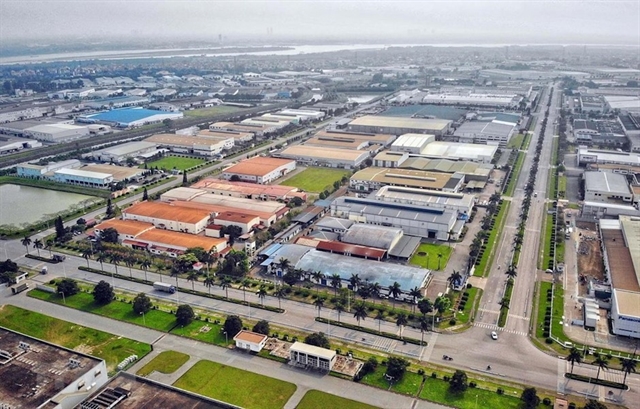HCM CITY ( WNAM MONITORING): Việt Nam is described as an ideal location for industrial real estate investment with its economic and demographic factors, and analysts predict it will emerge as a regional leader in this segment.
In a recent report titled “From Vision to Action: Accelerating the Green Transition in Vietnam’s Industrial Sector,” Jones Lang LaSalle (JLL) Vietnam highlighted Việt Nam’s industrial market dynamics, favourable demographics and ongoing green initiatives as drivers of sustainable transition in the sector.
Its strategic geographical location would see it benefit significantly from the China Plus One strategy, it said.
Foreign direct investment in the country had grown at a compounded annual rate of 10 per cent between 2010 to 2023, well above the ASEAN average of 7.6 per cent.
With a commitment to achieving net-zero carbon emissions by 2050, Việt Nam was moving towards a carbon-neutral economy.
Initiatives included increased use of renewable energy, enhanced energy efficiency and promotion of electric transportation.
The industrial sector was leading in green building certification with over 70 per cent of LEED-certified projects in 2023.
To accelerate this transition, Việt Nam had introduced Decree 35/2022/ND-CP, focusing on green initiatives, with eco-industrial parks being a key aspect.
Projects like Amata City Biên Hoà and Deep C Industrial Zones were making strides in implementing eco-industrial park models, emphasising energy efficiency, waste recycling and renewable energy use.
Trang Lê, head of research and consulting at JLL Vietnam, said: “Việt Nam’s industrial market is at a pivotal moment where embracing sustainability is not just regulatory compliance but a strategic advantage.
“We are extremely confident that all stakeholders looking to drive sustainable change and seize opportunities in Việt Nam’s industrial landscape will also see the business case for green initiatives.”
The report said Việt Nam’s plethora of highly educated workers, with 87 per cent having advanced education, was also a significant factor in attracting investment in logistics and industrial development.
The ready-built factory market was robust despite the economic headwinds, driven by growth in the manufacturing sector and foreign investment.
The ready-built warehouse sector, after a period of rapid growth, was currently stabilising, supported by domestic consumption and storage demand from the manufacturing sector.
As the industrial and logistics markets grew quickly, the market also attracted attention to new alternative assets such as data centers and cold storage.
Savills Vietnam too said Việt nam is emerging as an attractive destination for foreign investors in the industrial real estate sector thanks to its favourable geographical location, preferential tax policies and competitive production costs.
It enjoys a lot of advantages in attracting investment into industrial real estate, it said.
The Vietnamese industrial real estate market is witnessing strong growth. The exchange rate stability between the Vietnamese đồng and the US dollar compared to other currencies in the region and corporate income tax incentives are creating favourable conditions for ViệtNam compared to competitors like Malaysia and Indonesia, it said.
Free trade agreements play a significant role in attracting FDI to Việt Namm it said.
Since joining the World Trade Organization in 1995, Việt Nam has signed a series of trade agreements, with the Việt Nam-EU Free Trade Agreement (EVFTA) in 2019 sparking a surge in foreign investment, it said.
Major technology conglomerates such as Samsung, LG, Intel, and Foxconn have played an important role in making Việt Nam a regional electronics manufacturing hub, it added.


